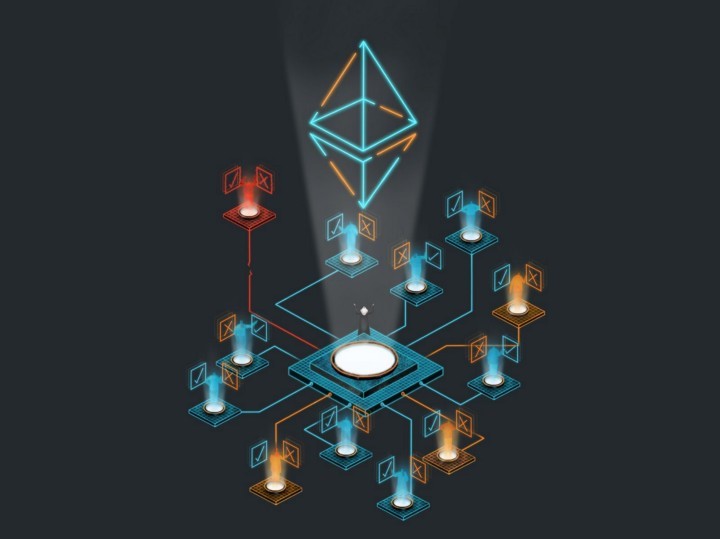The finance industry Is rapidly evolving, and two terms that are frequently heard nowadays are CeFi and DeFi. Cefi is an acronym for “Centralized Finance, a traditional form of finance that has existed for centuries. This type of finance, which serves as the foundation of the global financial system, is typically managed by a central authority. Blockchain technology has given rise to a new financial sector known as Decentralized Finance (DeFi), which is not governed by a single entity.
What is CeFi?
As a reason for users interacting with trusted intermediaries, centralized finance (CeFi) appears to be similar to traditional finance (TradFi). However, they are not the same thing.
TradFi refers to legacy institutions that have existed for centuries and are showing interest recently in the digital asset space. In contrast, CeFi refers to digital asset companies that offer crypto-related products and services.
Under centralized finance, the primary principle underlying centralized exchanges (CEXs) in crypto is that all crypto trading orders are routed through a central exchange. Binance and Coinbase are two examples of CeFi companies. Users register on these exchanges and use the same platform to trade cryptocurrencies. In addition, these exchanges provide lending, borrowing, and margin trading.
Even though funds are housed on the exchange, they are kept outside users’ control and vulnerable to threats if the exchange’s security procedures fail. As a result, various security attacks have targeted centralized exchanges. Customers on centralized exchanges feel safe disclosing personal information and entrusting funds to these organizations because they believe central exchanges are trustworthy.
What is Defi?
Customers in CeFi place their trust in intermediaries, whereas DeFi eliminates intermediaries and replaces them with smart contract protocols.
New imputed currencies have emerged due to the introduction of blockchains and their decentralized, permissionless (no authorization required) features. One of the blockchain’s most powerful features is the ability to transfer and trade financial assets without using trusted intermediaries. Furthermore, decentralized finance, a new blockchain subfield, focuses on developing financial technology and services on top of ledgers using smart contracts.
DeFi enables the trading of peer-to-peer financial products via blockchain-based decentralized applications (DApps). Applications built on existing blockchains such as Ethereum, BNB Chain, Tron, and Solana provide these products and services. The applications are made with smart contracts, which govern how the DeFi protocol operates.
DeFi, like CeFi and TradFi, provides trading, lending, and borrowing. However, there are several distinctions.
DeFi protocol operations are code-based, and non-custodial wallets can interact with DeFi protocols. They retain complete control over their crypto assets in this manner. Third, there is no need to create an account or complete KYC to use DeFi services.
DeFi vs CeFi: Various properties compared
The most prevalent DeFi vs CeFi properties are discussed in the section below.
Public verifiability
While DeFi application code is not always open source, its execution and bytecode must be publicly verifiable on a blockchain to be classified as non-custodial DeFi. As a result, unlike CeFi, any DeFi user can observe and verify that DeFi state changes are being executed in a timely manner. Because of this transparency, the new DeFi technology has an unrivalled ability to transmit trust.
Atomicity
A blockchain transaction allows for the execution of sequential actions, which may include several financial transactions. This combination can be made atomic, meaning that the transaction will complete all of its activities or fail as a whole. While CeFi lacks this programmable atomicity attribute.
Custody
DeFi enables customers to control their assets at any time directly (there is no need to wait for the bank to open). However, great power comes with great responsibility. Users bear the majority of technological risks unless such insurance is purchased. As a result, centralized exchanges, which are essentially the same as traditional custodians, are becoming increasingly popular for storing cryptocurrency assets.
Transaction costs
Transaction fees are critical in DeFi and blockchains in general for avoiding spam. However, because financial institutions in CeFi can rely on Anti-Money Laundering (AML) verifications of their clients, they can choose to provide transaction services at no cost (or are compelled by governments to offer some services for free).
Non-stop market hours
Most, if not all, DeFi markets are open 24 hours a day, seven days a week. As a result, DeFi lacks pre- and post-market trading, whereas CeFi generally has thin liquidity on various goods during these times.
Privacy
DeFi is only available on blockchains that use non-privacy-preserving smart contracts. As a result, rather than true anonymity, these blockchains provide pseudo-anonymity. Because centralized exchanges with AML policies are frequently the only viable option for converting money to cryptocurrency assets, these exchanges have the authority to reveal address ownership to law enforcement.
Arbitrage risks
Arbitrage between two decentralized exchanges on the identical blockchain is risk-free due to the atomicity of the blockchain, which allows traders to write a smart contract that performs the arbitrage and reverts if the arbitrage does not yield a profit. Arbitrage risk is comparable to a CEX and hybrid exchange when two DEXs on separate blockchains are arbitraged.
Inflation
Central banks retain the ability to create fiat money in CeFi, and inflation is frequently measured against the value of a representative basket of consumer goods, known as a consumer price index (CPI)
The asset supply of several cryptocurrencies is subject to change in the DeFi ecosystem. Bitcoin (BTC) is likely to face a dilemma in which supply has a hard cap, but the economic activity it must sustain does not, resulting in currency scarcity. Furthermore, without a block reward and thus no inflation, Bitcoin and blockchains, in general, may be vulnerable to security instabilities. It remains to be seen whether BTC and other cryptocurrencies suffer from severe income disparity due to the fiat system’s inflation. There is no solid evidence that cryptocurrencies fix this problem.
Cefi and Defi Pros and Cons
CeFi:
Pros
Familiar: CeFi platforms operate similarly to traditional financial service providers. This means that most people will find them familiar and straightforward to use.
Fiat-to-crypto support: You can easily buy crypto with your local currency on a centralized crypto exchange. Depending on where they operate, CEXs accept a variety of fiat currencies.
Cons
Custodial: CEXs control the digital assets in their users’ wallets/accounts because they hold private keys. Users may be denied access to their assets if the platform suspends withdrawals and deposits without these private keys.
Personal information is required: To use CEXs, users must be willing to share personal information such as their names, residential addresses, national ID details, and selfie pictures.
Insufficient transparency: CeFi companies make decisions behind closed doors. As a result, users may be unaware of the trading practices they employ. Furthermore, their systems are off-chain, which means that exchange transactions are not recorded on the blockchain.
Restrictive: Because of location restrictions, CEXs may not be accessible to everyone. Certain exchanges, for example, may not allow traders from specific (black-listed) countries to trade on their platform. Some of these limitations may be imposed as a result of regulatory requirements.
DeFi:
Pros
Self-custody: since users hold private keys, cryptocurrency users have control over their assets. That means no one can prevent them from accessing their funds.
Privacy: DeFi users have it easy because no personal information is required, and their wallet is not linked to their real identity.
Permissionless: Anyone with a wallet and an internet connection can use DeFi products. There are no limitations.
Transparent: DeFi transactions are publicly visible on the blockchain. This provides users with transparency.
Cons
Smart contract risk: Attackers may exploit smart contract vulnerabilities to steal crypto assets locked within a DeFi protocol.
Steep learning curve: DeFi protocols are novel and unconventional. As a result, beginners may need help using or comprehending. That means people must first learn about DeFi and the available products before interacting with them.
Scalability: DeFi protocols rely on the blockchains on which they are built. As a result, they inherit the scalability issues associated with such blockchain networks. Low transaction throughputs, which result in high transaction fees when the network is congested, are examples of scalability issues.
What’s Better?
This is based on the users’ various requirements and what they are looking for. For example, those who value financial sovereignty and privacy may prefer DeFi protocols, whereas institutional investors typically prefer regulated CeFi platforms. This could explain why CeFi and DeFi have coexisted for so long.








